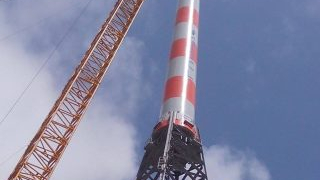Steel has carried modern infrastructure for more than a century. Bridges, towers, plants, warehouses. The way steel structures are manufactured decides if they last a generation or fail much sooner. Industrial Steel Structure Manufacturing is not just cutting, welding, and assembly. It combines metallurgy, structural engineering, machining, and decades of experience. I have visited factories large and small. Some cut corners with weak coatings or poor welding. Their structures rarely last. The best manufacturers handle details carefully. Their towers stand strong even after years of stress from wind, rain, and earthquakes.
Material selection isn’t glamorous, but it’s everything
Steel is not all the same. Structural grades vary in carbon, manganese, and other elements. The choice affects how towers behave under loads and changing temperatures. Lattice towers manufacturers know this well. Use a cheap grade, and cracks appear within years. Use an expensive alloy where it is not needed, and costs spiral. The best approach is balance. Choose grades tested for the actual site. Coastal areas demand corrosion resistance. Deserts require steel that handles heat cycles. Overengineering for the wrong conditions wastes money without adding strength.
Fabrication tolerances aren’t suggestions
Shop drawings list tolerances in millimeters and angles. These limits are not optional. If fabrication slips out of spec, installers adjust on site. That misalignment creates stress in the structure. In Industrial Steel Structure Manufacturing, tight tolerances matter as much as welding safety. I have seen tower legs a few degrees off. They still fit together, but the load shifted. Years later, cracks appeared exactly where expected.
Welding the art that makes or breaks longevity
Inspectors often say welds fail before steel does. It is not always true, but close enough. Welding is less about appearance and more about penetration and avoiding cracks. Poor heat control creates brittle zones. Skipping preheating on thick sections leaves residual stress that turns into cracks under load. Welds also corrode faster than the base metal. Protective coatings must treat welds as weak points. Ignore them, and rust will creep along seams.
Surface protection is not a luxury
Galvanization is a first line of defense, not an extra. Lattice towers manufacturers who cut immersion times in zinc baths or skip full hot-dip galvanization invite problems. Repairs come fast and cost more than doing it right the first time. Best practice is hot-dip galvanization with verified thickness. Powder coating or paint can extend life but should not replace zinc. In harsh chemical or coastal zones, duplex coatings add even more protection.
Designing for maintenance, not just installation
Durability depends on more than day-one performance. Structures should allow easy inspection, replacement, and drainage. Without drainage holes, hollow sections trap water and corrode from inside. I have seen solid gantries ruined in less than a decade for this reason. Small design choices matter.
The human factor matters
Raw materials and machines are only part of the story. Skilled welders, careful shop supervisors, and trained inspectors make the difference. A workforce without training or motivation produces weak results. Manufacturers that invest in skills see fewer defects. Automation helps, but pride in craft still counts.
Are standards enough
International standards provide a baseline. ISO, ASTM, and IEC give frameworks, but they are minimums. Meeting them does not always mean long-term durability. Galvanization thickness, for example, is set for average conditions. But there is no such thing as an average site. A tower in central India and a tower near a salt flat face different lives. Treating them the same shortens service life.
Closing thoughts
Industrial Steel Structure Manufacturing keeps evolving with new alloys, coatings, and digital tools. Still, the fundamentals remain. Right material. Precise fabrication. Strong welds. Protective coating. Skilled people. Durability comes from layers of good practice. Skip one, and life span drops. Get them all right, and the structure will still stand strong decades later.









